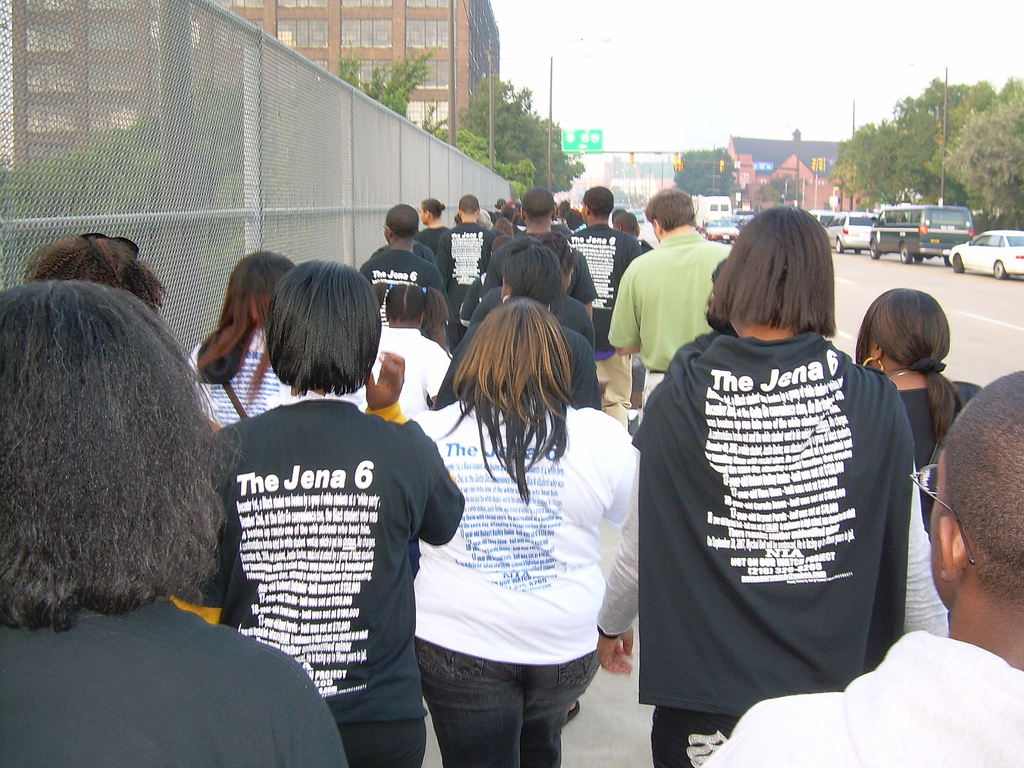The case of the Jena Six exposed racial injustice and inequality following an incident involving six male African American teenagers. The arrest of the students, all enrolled at Jena High School in Jena, Louisiana, ignited a national movement to address longstanding injustices in what has often been referred to as the “school-to-prison pipeline” of policies and practices that push at-risk African American children out of classrooms into the juvenile and criminal justice systems.
The incident creating the Jena Six took place on August 31, 2006, the day after a school assembly where an African American male freshman, Justin Purvis, asked the school principal, Scott Windham, about sitting under a specific tree in the school courtyard. Purvis and other Black students sat under the tree, but the following morning they found nooses on the tree. The students and local Black residents were alarmed at that discovery, recognizing the historical background associated with the lynching of African Americans in Louisiana and across the nation. They believed the nooses were a message from unknown white supremacists of their feelings and possible intentions toward African American students at Jena High School. What followed was a series of incidents on the school campus, including an arson that generated significant damage to the high school on November 30, 2006. No one was charged with the arson, and both white students and Black students suspected each other.
In this atmosphere of heightened racial tension, an altercation between six Black Jena High School students and a white male student, Justin Barker, at the school on December 4, 2006, led to him being taken to the emergency room and the six Black students, Robert Bailey Jr. and Carwin Jones, both 18, Theo Shaw and Bryant Purvis, both 17, Mychal Bell, 16, and Jesse Ray Beard, 14, being arrested and charged with attempted murder. They became known as the Jena Six.
The six students were tried individually. The young men received legal assistance and support from the NAACP and the American Civil Liberties Union, especially after all-white juries were selected in each case.
The charges and subsequent trials of these African American students shed a spotlight on the differing treatment of students by race regarding school discipline. On September 20, 2007, nearly 20,000 protestors marched in Jena, a town of 3,000 residents, calling attention to similar incidents where white students were treated more leniently. Protestors included Reverends Jesse Jackson, Martin Luther King III, and Al Sharpton and rappers Ice Cube, Salt-n-Pepa, and Mos Def.
National outrage continued to mount as the cases proceeded, garnering more media attention, including from the New York Times, Chicago Tribune, BBC, MTV, and CNN. That heightened awareness played a significant role in the young men having the initial charges of attempted murder reduced, which in turn influenced their sentences. Mychal Bell, 16, at the time, was tried as an adult, but his sentence was 18 months in a juvenile facility. The other five were charged with simple battery and entered “no contest” pleas which resulted in their paying fines, court costs, restitution to Barker’s family, and seven days of probation.
Members of Jena Six have continued to share their experiences of racial injustice in the public school and justice systems. One of the six, Theo Shaw, decided to become an attorney because of the incident.

